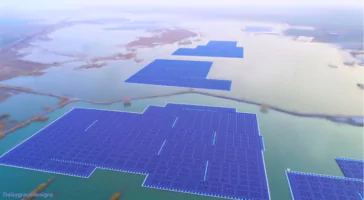I recently came across a fascinating article that left me truly excited about the advancements in renewable energy.
It seems that a joint effort between a French high-tech energy-saving enterprise and authorities in Suzhou City, China, is bringing forth an innovative project: a 70MW super-large scale aquatic photovoltaic power generation project in the area of a coal-mining collapse.
What sets this project apart is the utilization of floating solar panels, a concept that introduces advanced technology to develop the water area of the coal-mining subsidence. This approach is remarkable because it not only maximizes the utilization of available resources but also addresses
the environmental impact of coal mining.
The benefits of this project are significant. Once the aquatic photovoltaic power generation project is operational, it is projected to reduce carbon dust emissions by a staggering 19,000 tons per year. Additionally, it will contribute to a reduction of 70,000 tons of carbon dioxide emissions and save 27,000 tons of standard coal annually. These numbers demonstrate the immense potential of floating solar panels in combating climate change and promoting clean energy generation.
The introduction of floating solar panels not only provides an alternative to traditional land-based solar installations but also highlights the importance of innovation in the renewable energy sector. By strategically utilizing water surfaces for photovoltaic power generation, we are not only diversifying our energy sources but also making efficient use of available resources.
This project exemplifies the possibilities that emerge when technology, innovation, and environmental consciousness converge. It sets a remarkable precedent for future projects and inspires us to explore more creative ways to harness renewable energy.





